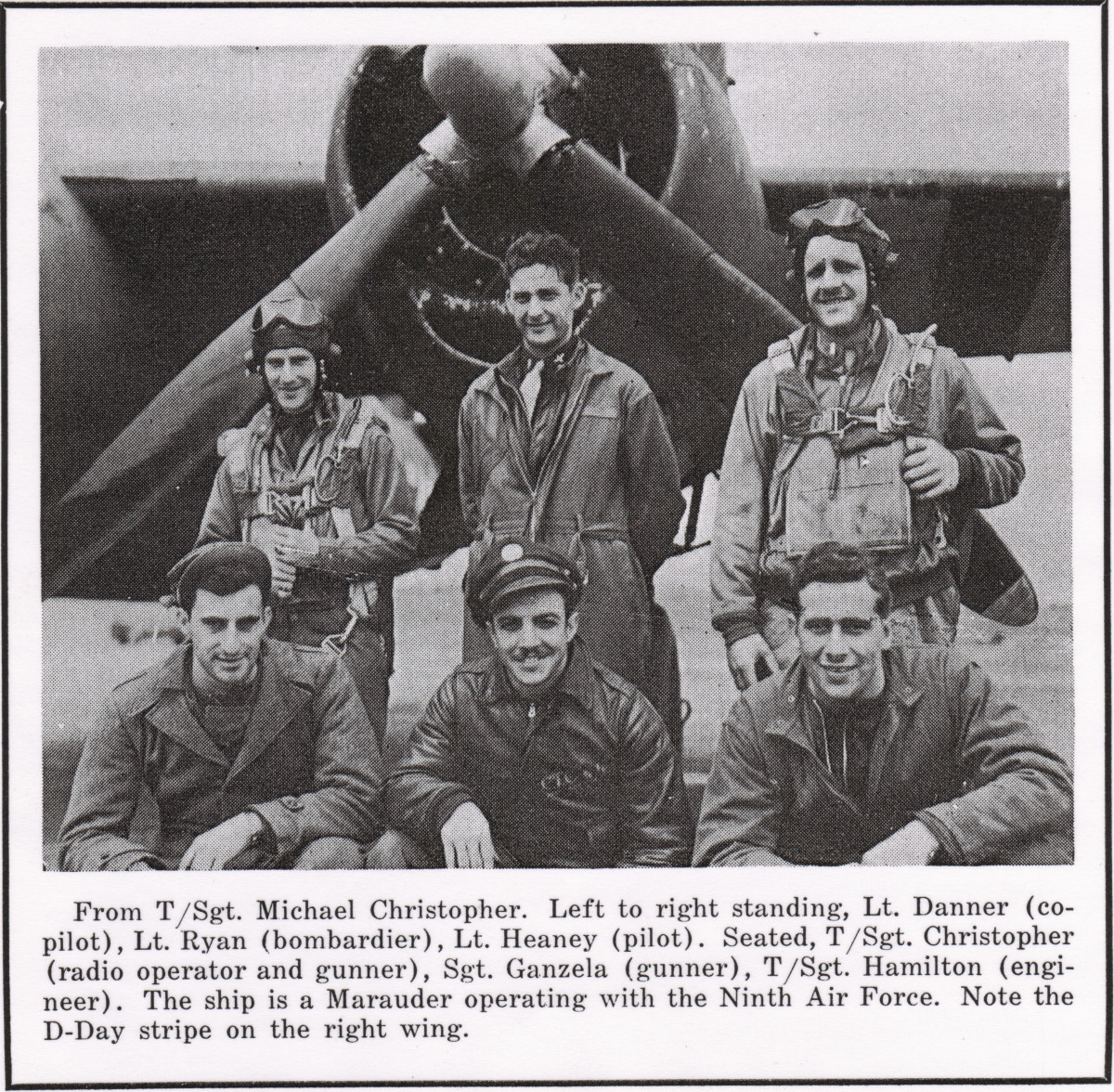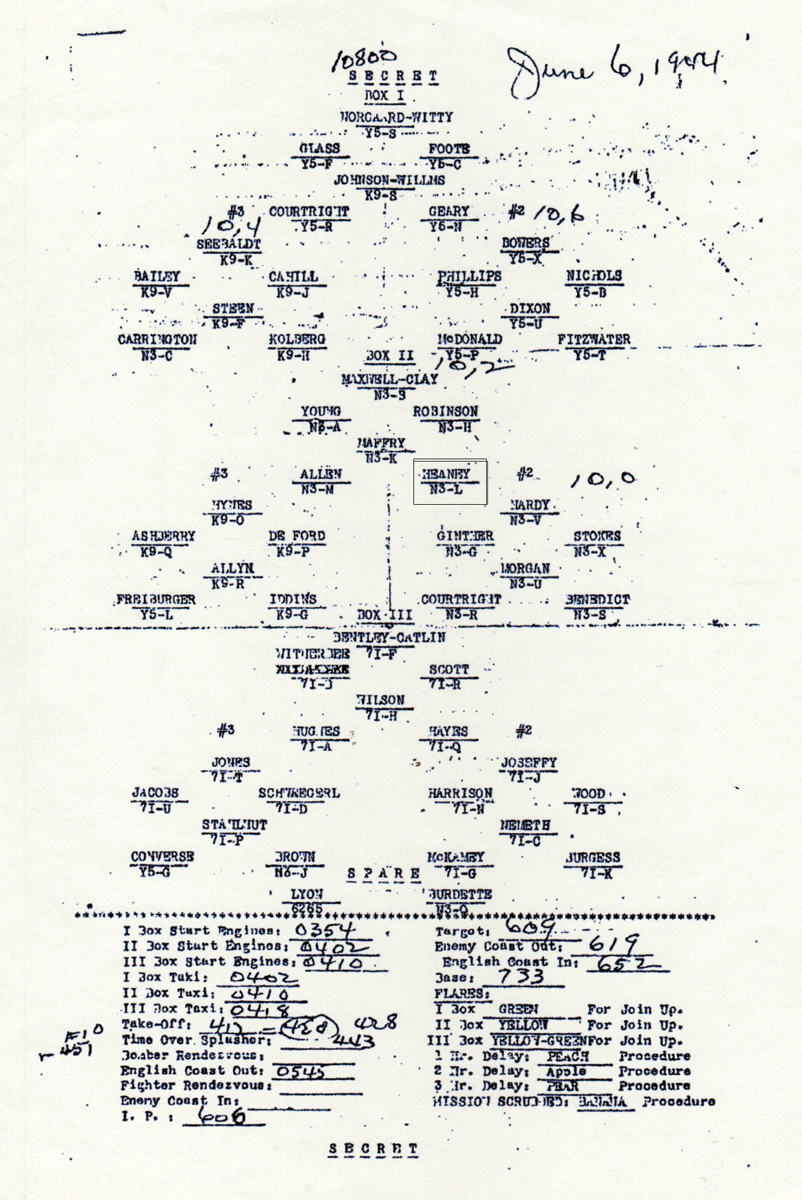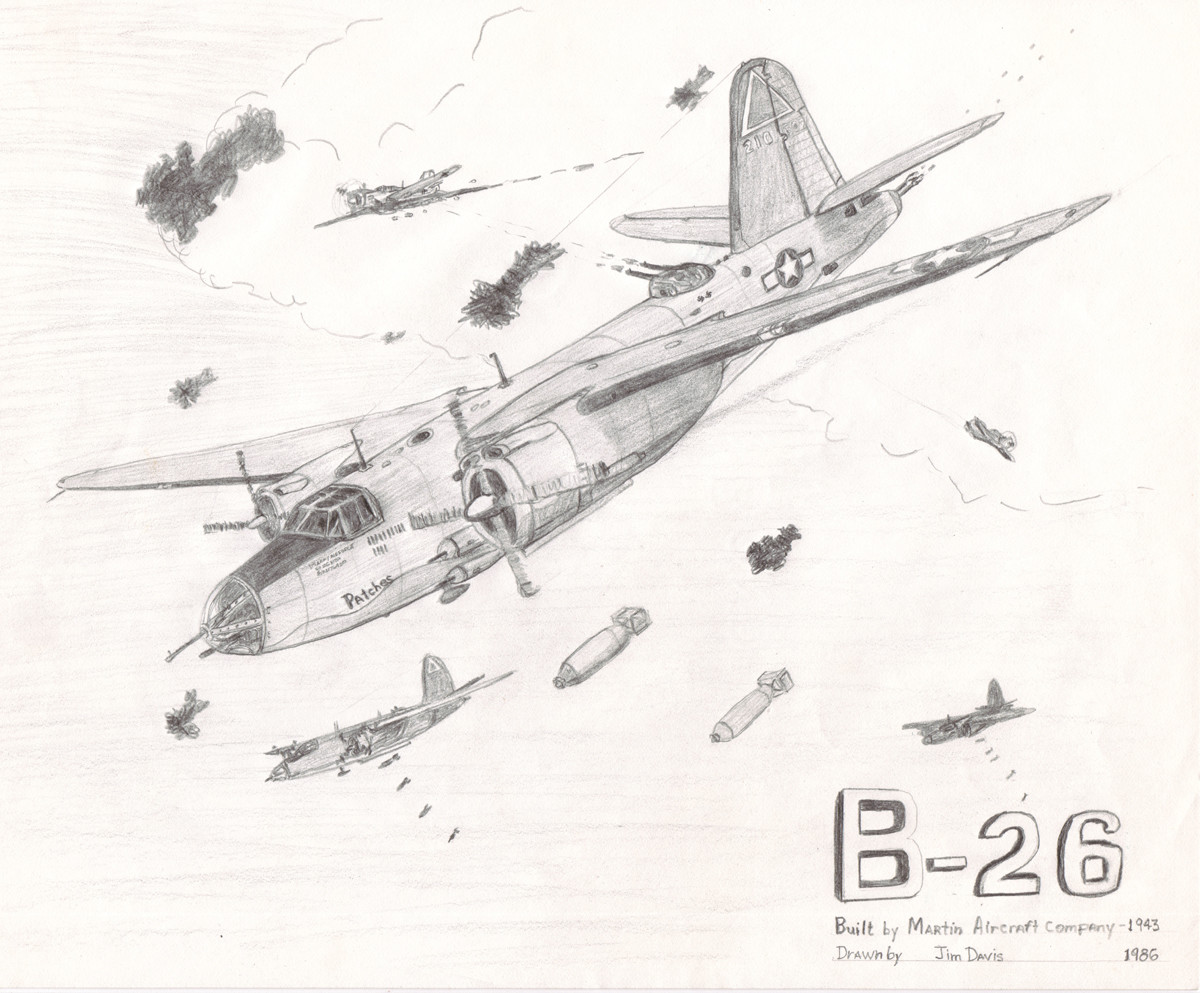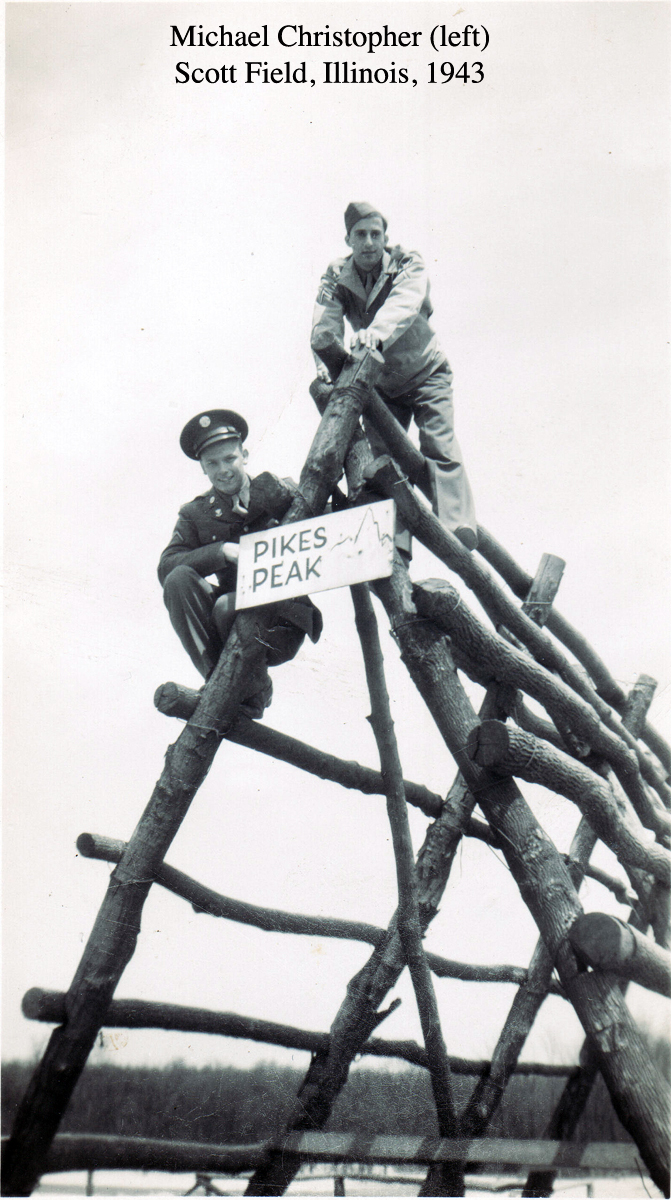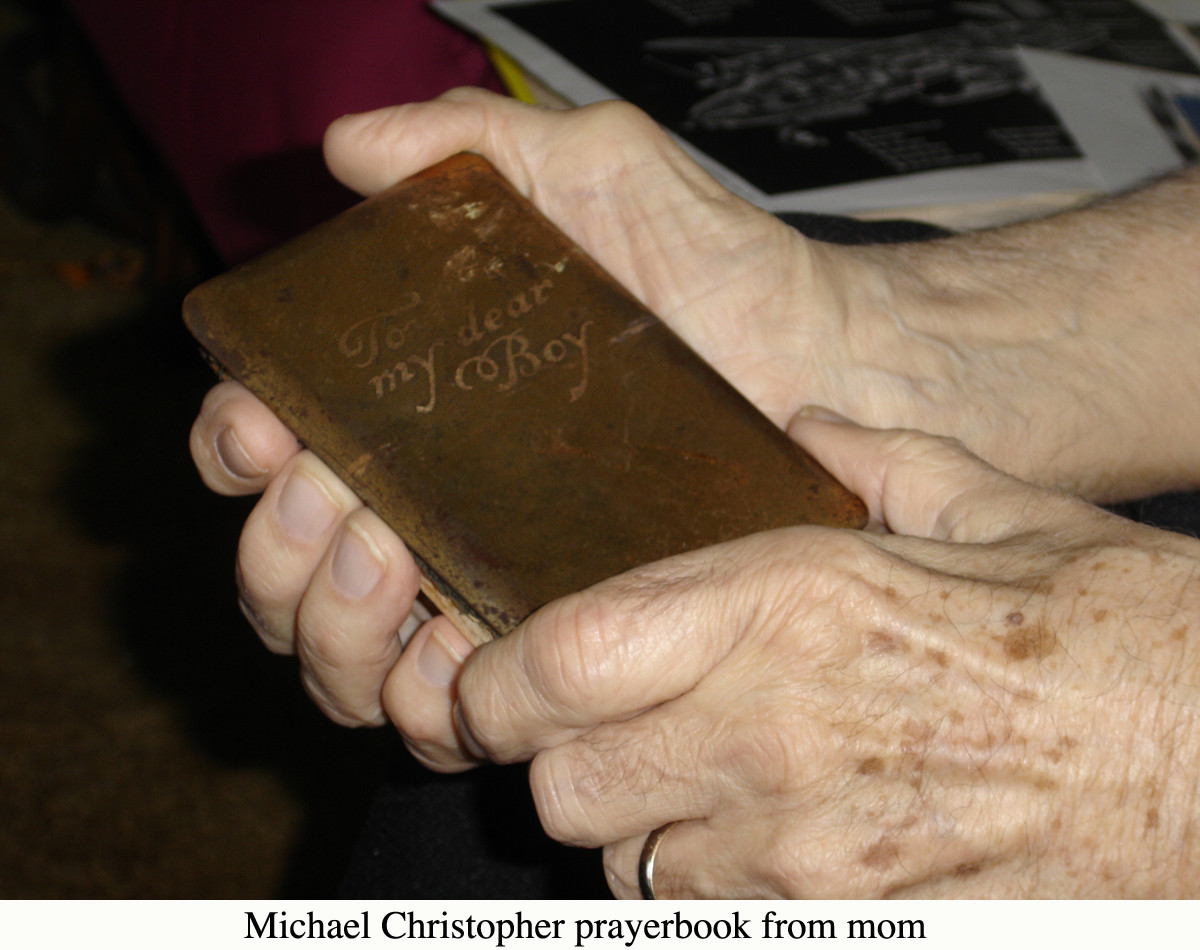T/Sgt. Michael Christopher Radio/Gun 344th BG 496th BS
T/Sgt Michael A. Christopher
Click images to enlarge. Please contact webmaster, Carl Carrozza for additions, corrections, etc (damonbok@hotmail.com)
This overview contains materials mostly provided by his grandson and word of mouth descriptions;
Mike Christopher
Certified Flight Instructor
Grandson of Sgt. Michael Christopher
Mikechristopherosu@yahoo.com
T/Sgt Michael A. Christopher served in the ETO between March 9, 1944 and Nov 6, 1944 after completing 66 missions with the 344th BG 496th BS. He was a radio operator/waist gunner. He had said on multiple occasions his ship was 5th in formation for the first D-Day raid. (see Heaney N3-L in formation diagram)
Two retold memories of note: (note: information not verified fully)
On one mission, Christopher’s aircraft was forced down, probably due to flak damage. There was possibly engine damage, but “the main spar” had a chunk taken out of it. They put the plane down at an abandoned/improvised strip. The French resistance or free French expedited their return back to squadron a few weeks later. The Air Corps did not know they survived and were in the process of notifying Christopher’s parents that he was MIA. They were so far along in this process, that Christopher noted that they even issued him a different set of dog tags when he got back to base. (different serial number?).
Webmaster’s note: I can’t find a MACR on this event. But I have a theory. Tell me what you think. Let’s say the plane went down in the weeks after D-Day in an area that had just been liberated. That would mean he was not shot down over enemy territory thus no MACR. I don’t have access to “Accident reports” that would have been completed instead. It would still be possible that “free French,” as you described them in a re-telling, might have safely escorted him to the lines safely.
On a different mission/flight, T/Sgt Michael A. Christopher was supposed to go up but had “knocked out” and someone else went. The plane crashed on take off. He said the pilot, “Gordon (first name?), but called Gordy because “he was bald and had a huge head” rotated too early, nosed up too high, and stalled the B-26 on takeoff. The plane went into a ditch at the end of the runway, and at least the pilot was killed (most of him went through the windshield). Not sure of the date, but this may have happened in Ireland, prior to making it to the 344th at Stansted. Also, for the second one (crash on takeoff), I remember it might have been a training flight.
Attempt to verify above: It is known that T/Sgt Michael A. Christopher plane was the N3-L
Crew of N3-L
Pilot Lt Heaney
Copilot Lt Danner
Nav/Bombardier Lt Ryan
Radio/Gun T/Sgt. Michael Christopher
Engineer T/Sgt Hamilton
Gunner Sgt Ganzela
N3-L was named “Patches.”
This ship should be 44-67981, N3-L. Mike sent an inquiry to the Library of Congress and Air Force Historical Society. He will share any new information provided.
It could be 42-95940 N3-L : Built at the Glenn L Martin factory at Baltimore, Maryland as a B-26B-50-MA. Accepted by the Army Air Force on 7/12/43. Then flown by New Castle (2nd Ferry Group), Wilmington, Deleware (from 11/12/43), to the 3rd AF staging area at Hunter Field, Savannah, Georgia (from 13/12/43). Next went to Morrison Field, West Palm Beach, Florida (from 29/12/43) from where the aircraft was flown overseas to the UK via the Southern Ferry Route (Listed as Carribean Wing), departing the USA on 31/12/43. The aircraft record card then lists, SOXO A (Europe – 8th AF) on 31/12/43, and SOXO R (Europe – 8th AF) from 15/1/44. Lost an engine on take off from A-59 Cormeilles-en-Vexin, France on 5/3/45 and crashed. The aircraft flown by Emiel J Larsen suffered Cat.3 damage, and was salvaged the same day.
If Emiel J. Larsen’s nickname is Gordon, than this is probably “Patches.”
It could be 44-67981 N3-L : Built at the Glenn L Martin factory at Baltimore, Maryland as a B-26G-20-MA. Accepted by the Army Air Force on 24/11/44. Then flown by Baltimore, Maryland (ATC) from 30/11/44, to the 3rd AF staging area at Hunter Field, Savannah, Georgia (from 30/11/44). Next went to Morrison Field, West Palm Beach, Florida (1103 BAS) from 5/12/44, from where the aircraft was flown overseas via the Southern Ferry Route, departing the USA on 7/12/44. The aircraft record card then lists, GLUE 9AF A (Europe – 9th AF) on 7/12/44, and GLUE 9AF R (Europe – 9th AF) on 3/1/45. Entered combat with the 344th BG / 496th BS on 14/3/45. The aircraft flew 32 combat missions and survived the war.
The date of this plane entering the war was late in T/Sgt Michael A. Christopher’s timeline and survived the war. This adds doubt to their being the N3-L in question.
According to Flip Marchese: Those s/n(s) represent two time=frames. While some planes transfer and get new codes, often the reassignment of codes marks an inventory or combat loss.
The earlier plane is reported as t/o accident, March, 1945.
5-Mar-45 France A-59 496th Crash on take-off due to engine failure. 42-95940 Emiel J. Larson
The second s/n was produced rather late.
According to Flip Marchese: Joe Baugher lists:
42-95940 (496th BS, 344th BG, 9th AF) in takeoff accident at Cormeilles-en-Vixin airfield A-59 Boissy l’Aillerie, France
Mar 5, 1945 due to engine failure. All crew survived, aircraft badly damaged, unknown if repaired.
A photograph of Michael Christopher atop the “Pikes Peak” obstacle on the obstacle course at Scott Field, Illinois, where he was stationed for training in 1943
I was going through my grandfathers interview again, and toward the end of the second part he mentions that he had written in to the Milkrun newsletter. Someone had requested information about “the original Patches.” And he knew that he was the only one still alive. It must be an issue earlier than 2007. Eventually the webmaster will ook for it as he continues to produce a digital Milkrun Archive.
On the D-Day Mission 1 Formation Diagram Pilot of my grandpa’s ship N3-L was piloted by Heaney.
2 silver olc 2 bronze olc on air medal
ETO medal 6 battle stars
Good conduct medal
A prayer book from Mike;s mom that he took with him to the ETO.
Notes from interview posted by Western Reserve Historial Society (WRHS) Part I
TSgt Michael A. Christopher was born in Cleveland, Ohio. He graduated high school January 1942. Christopher enlisted in early 1943 at 19 years old and requested the Army Air Corp. He was initially sent to Camp Perry, Ohio. Next he was sent to St. Petersberg, Fla. and Clearwater, Fla. Michael wanted to be a pilot but found out that he needed two years of college for that. Aptitude tests indicated he should be a radio operator/radio mechanic so he was sent to Scott Field Illinois radio school for 9 months and was promoted to PFC.
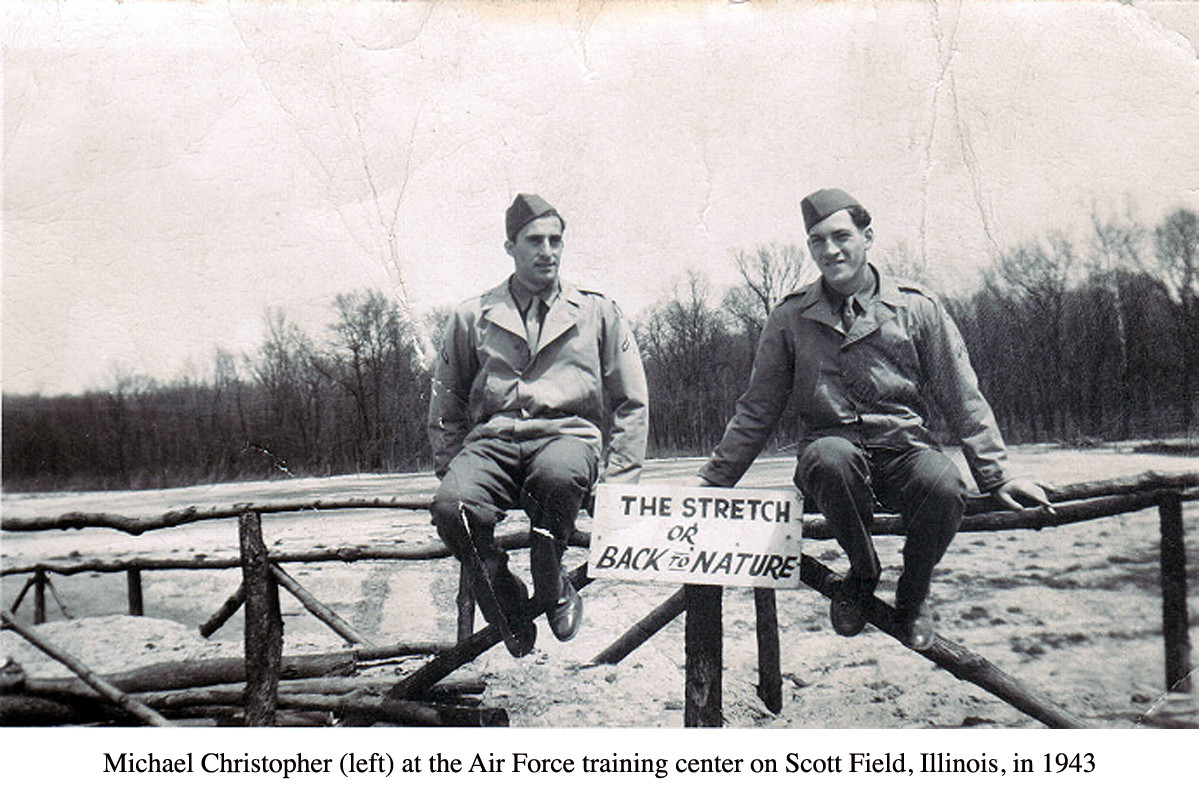 After a furlough, his next stop was Gunnery School in Los Vegas for 50 cal. machine gun and was there for about 2 months. Next, in Barksdale La. he was assigned a crew. After about 3 months he left for overseas on birthday Feb 15, 1944. Pilot Heaney , engineer Hamilton, radio Christopher, and a ATC Navigator left Homestead Fla In new B-26 and took Southern Route to the ETO.
After a furlough, his next stop was Gunnery School in Los Vegas for 50 cal. machine gun and was there for about 2 months. Next, in Barksdale La. he was assigned a crew. After about 3 months he left for overseas on birthday Feb 15, 1944. Pilot Heaney , engineer Hamilton, radio Christopher, and a ATC Navigator left Homestead Fla In new B-26 and took Southern Route to the ETO.
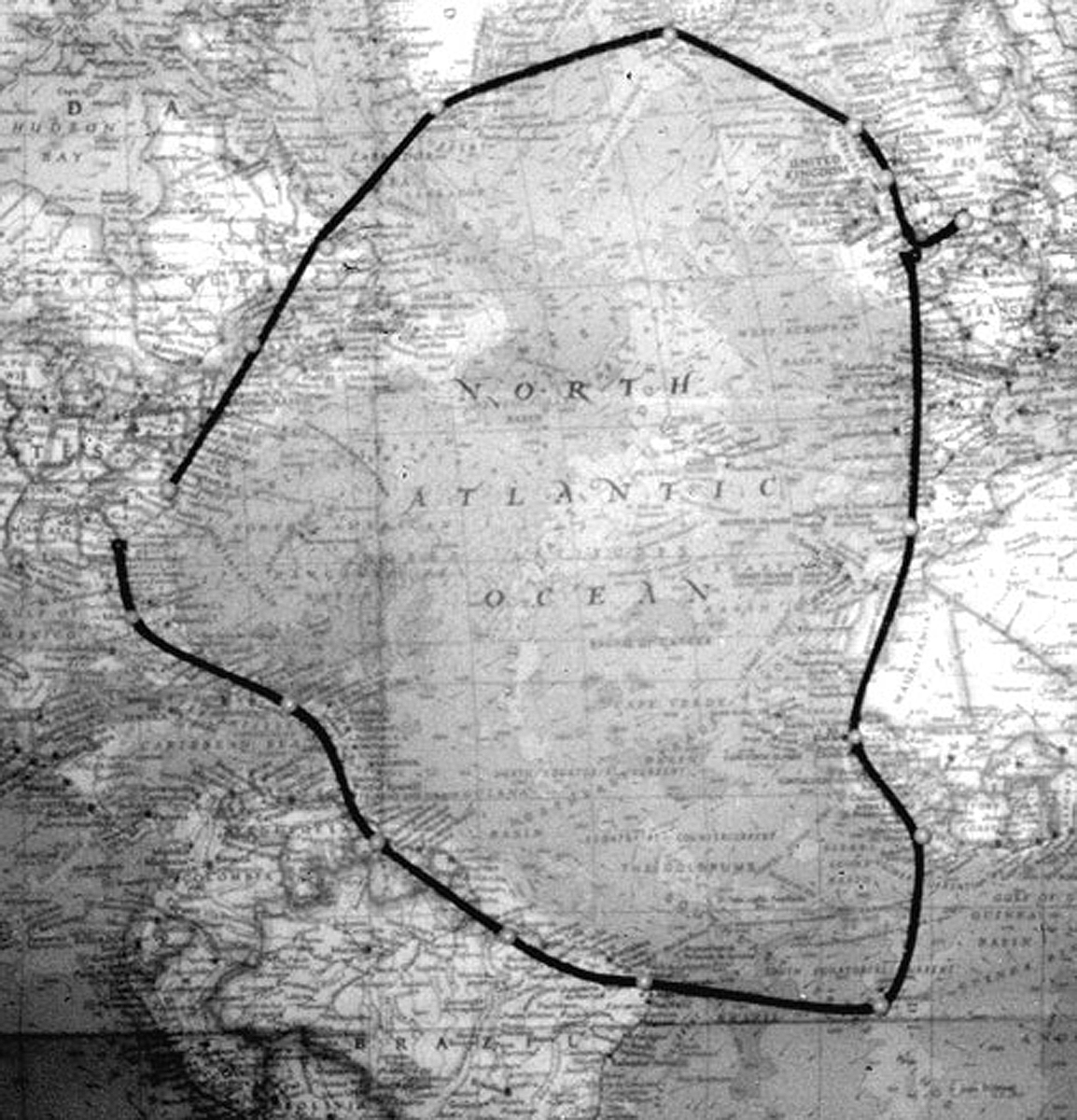 During a leg flying around the Iberian Peninsula Christopher used radio location techniques to determine that they had turned too soon and were headed toward occupied territory. He told Heaney who made a correction based on Christopher’s input. Mike Christopher wished he had his regular navigator. He then used a modulated signal to 3 stations to get coordinates and verified they were too near France. They only had a poor class 3 signal. Mike resent signals and proved that the coordinates were correct. Pilot Heaney headed North and were guided into Ireland by Spitfires.
During a leg flying around the Iberian Peninsula Christopher used radio location techniques to determine that they had turned too soon and were headed toward occupied territory. He told Heaney who made a correction based on Christopher’s input. Mike Christopher wished he had his regular navigator. He then used a modulated signal to 3 stations to get coordinates and verified they were too near France. They only had a poor class 3 signal. Mike resent signals and proved that the coordinates were correct. Pilot Heaney headed North and were guided into Ireland by Spitfires.
Notes from interview Western Reserve Historial Society (WRHS) Part II & III
Upon arrival he was sent to a training school in Belfast, Ire. for radio operators. the class included 50 or 60 radiomen. Of those, 20 including Christopher were assigned to the 344th Bomb Group and were divided among its bomb squadrons. Christopher joined the 496th Bomb Squadron.
On D-Day Christopher flew in the 5th airplane in 344th formation leading the 9th Air Force. The clouds were low that day, so they were told that they could go down to below 2000 ft as long as they could see target. The group dropped small 150 lb bombs on the beach to create foxholes and bomb inland gun positions such as 88s. Every available plane was sent up. The formation included 3 boxes of 18 planes normally 2 flights were used.
There were two missions on D-Day, first at daybreak and 2nd mission later in the day.
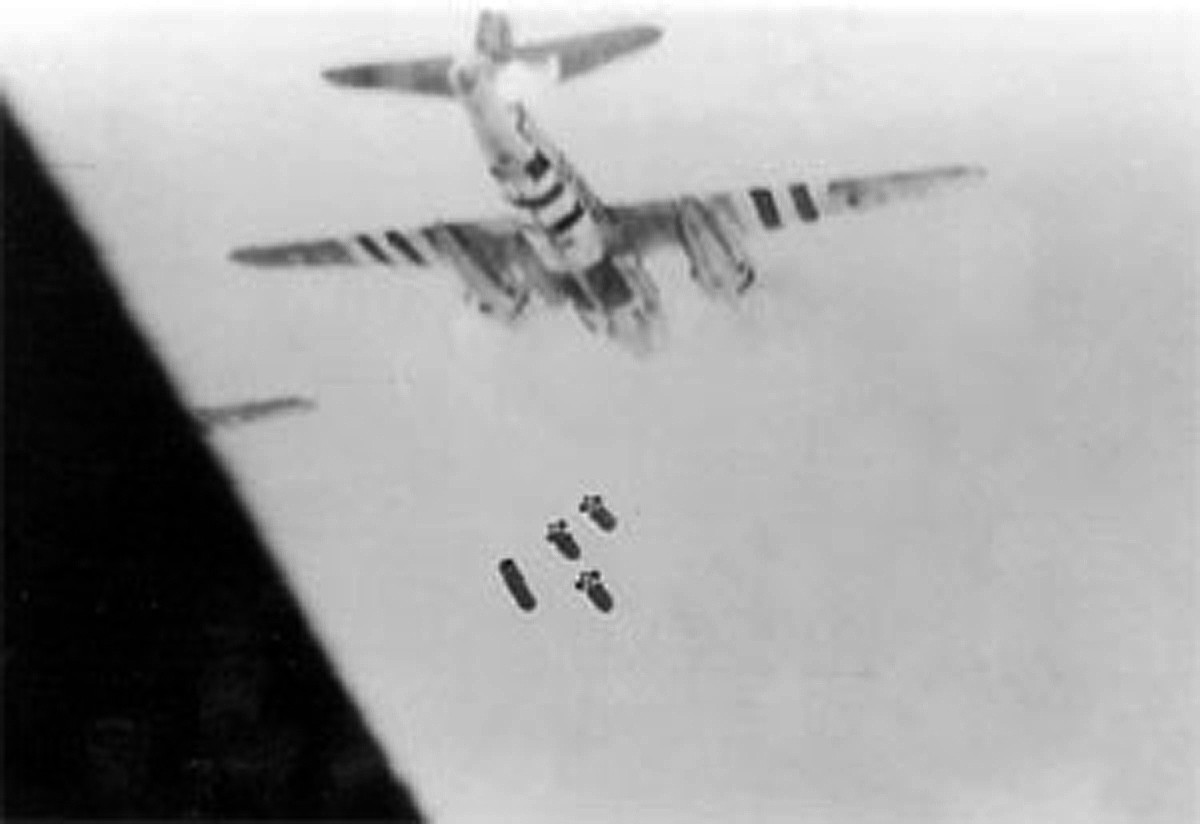
D-Day was almost a Milkrun (easy assignment). Only one plane was lost. The Germans were afraid of B-26s because of its many machine guns. We could fire level, back, and down from each window.
T/Sgt Michael A. Christopher’s aircraft named “Patches.” The name was coined by pilot, Heaney because it accumulated over 300 holes after 30 missions. He wanted them to be painted blue so he could count them more easily.
T/Sgt Michael A. Christopher earned six battle stars; France, Balkins, Netherland, Northern Germany, D-Day, Ardennes. He flew 66 missions. The final number was supposed to be 65 missions, but he flew and extra while waiting for orders came back.
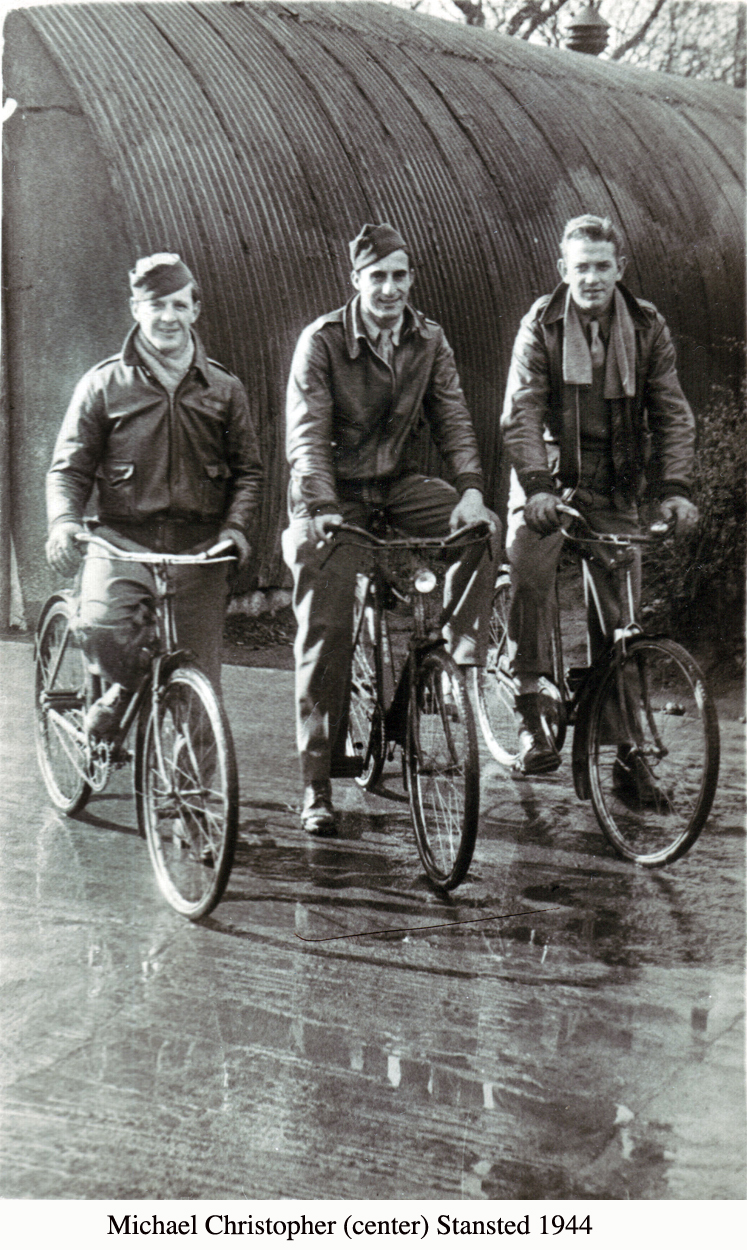
Christopher arrived back in the states Nov. 1944. He was still only 20 years old. . . not old enough to buy beer or vote. He and others not separated yet were treated “like kids”. They found a way to complain to General Hap Arnold. They were being held in case needed for Pacific and split up to different bases. T/Sgt Michael A. Christopher was sent to instructor school to teach aerial gunnery. Finally, he was discharged and returned to Cleveland.
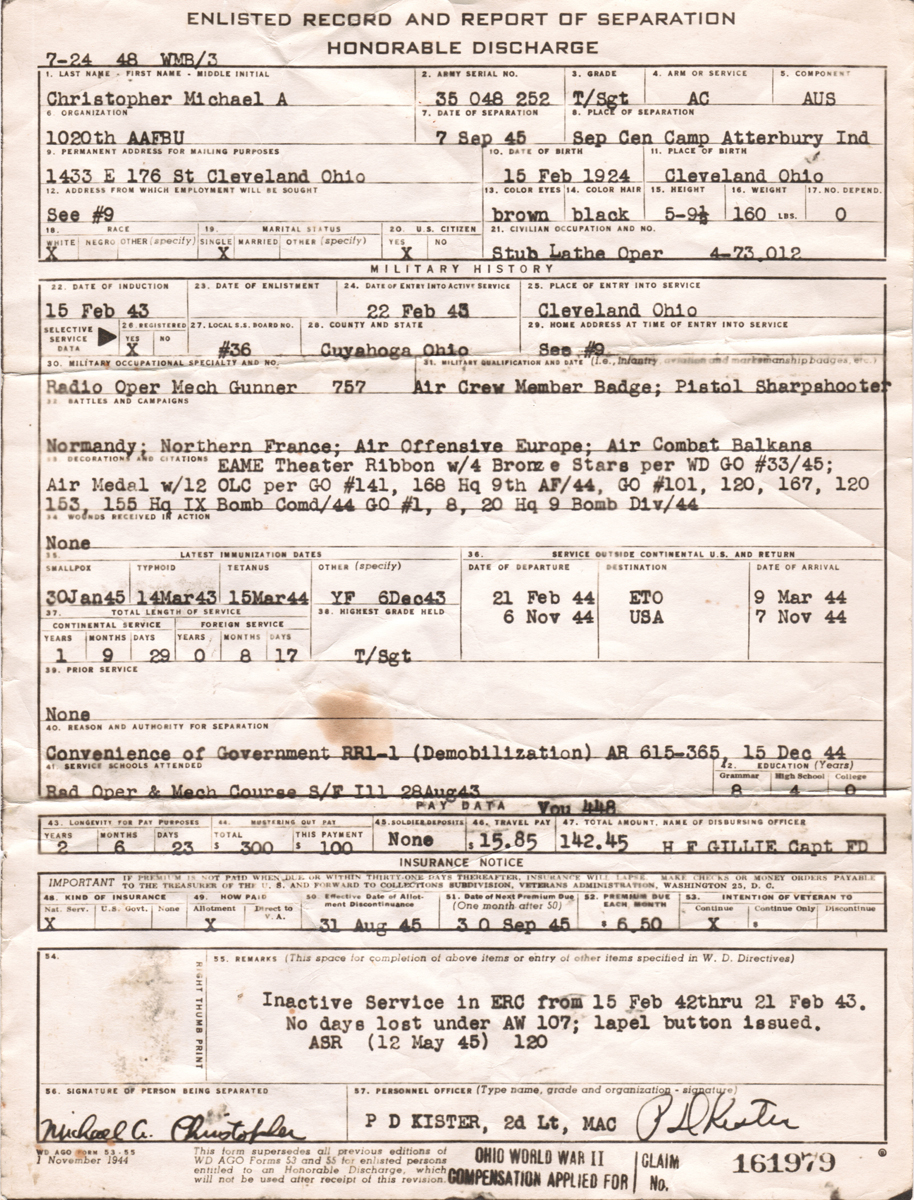 He stayed home for a month and then got a job in hydraulics assembly and later in the lab. Mike did this for 10 years and went to TRW factory engineering as a technician to overlook big testing equipment for B-52 bombers.
He stayed home for a month and then got a job in hydraulics assembly and later in the lab. Mike did this for 10 years and went to TRW factory engineering as a technician to overlook big testing equipment for B-52 bombers.
Here is a ink to pictures and audio interview of T/Sgt Michael A. Christopher, much of the material here is drawn from that site and the memories of his grandson.
The Western Reserve Historial Society (WRHS) has produced a page with pictures and audio interview of T/Sgt Michael A. Christopher. Use the following links;
